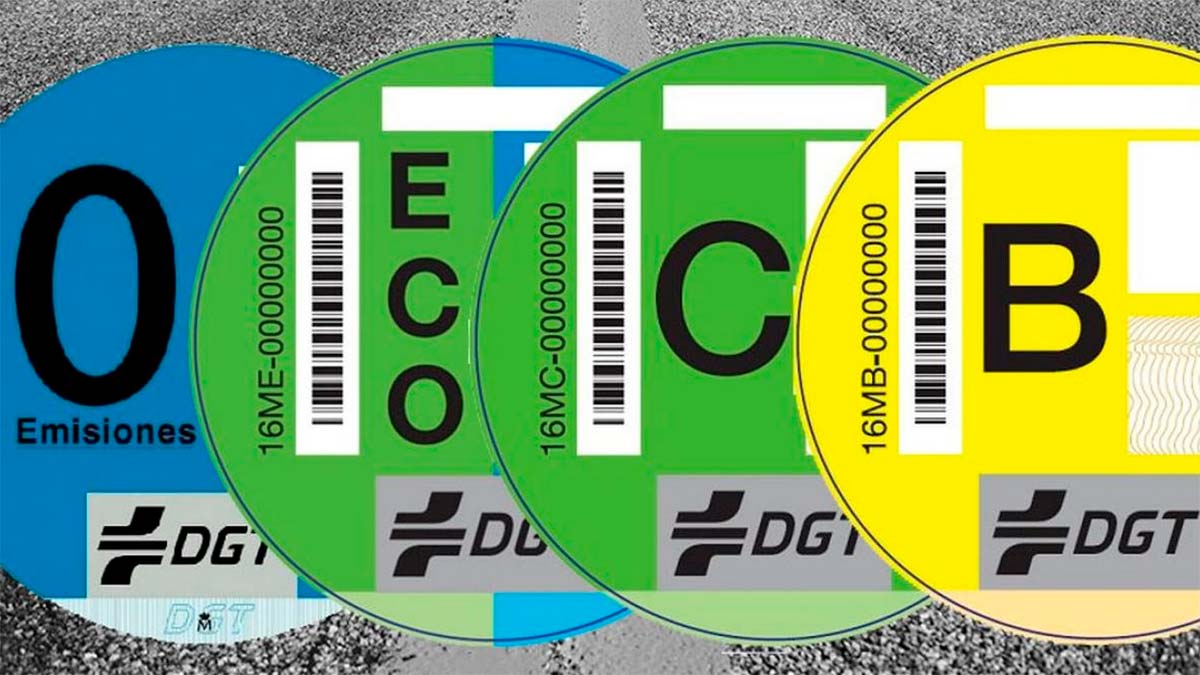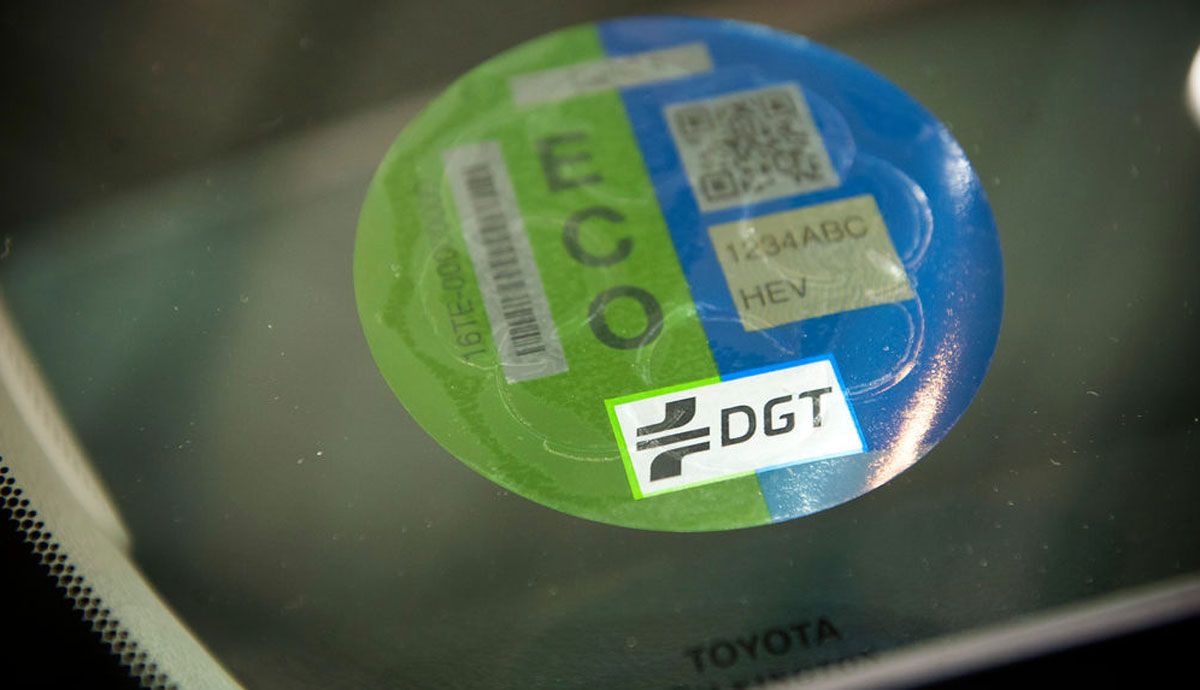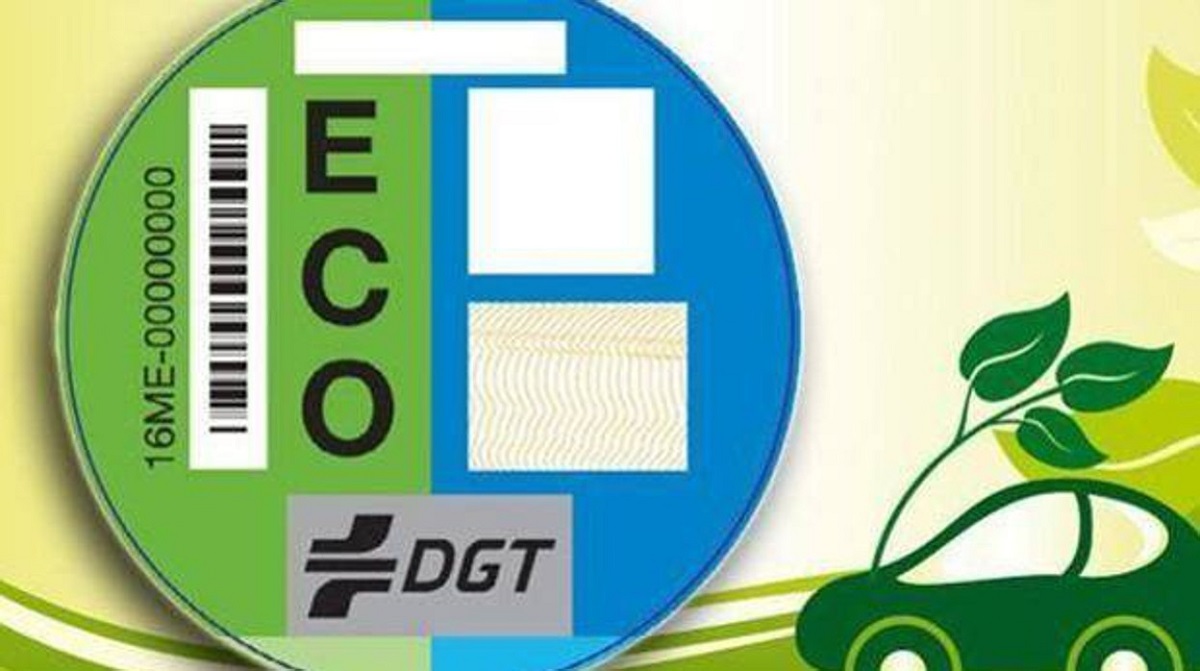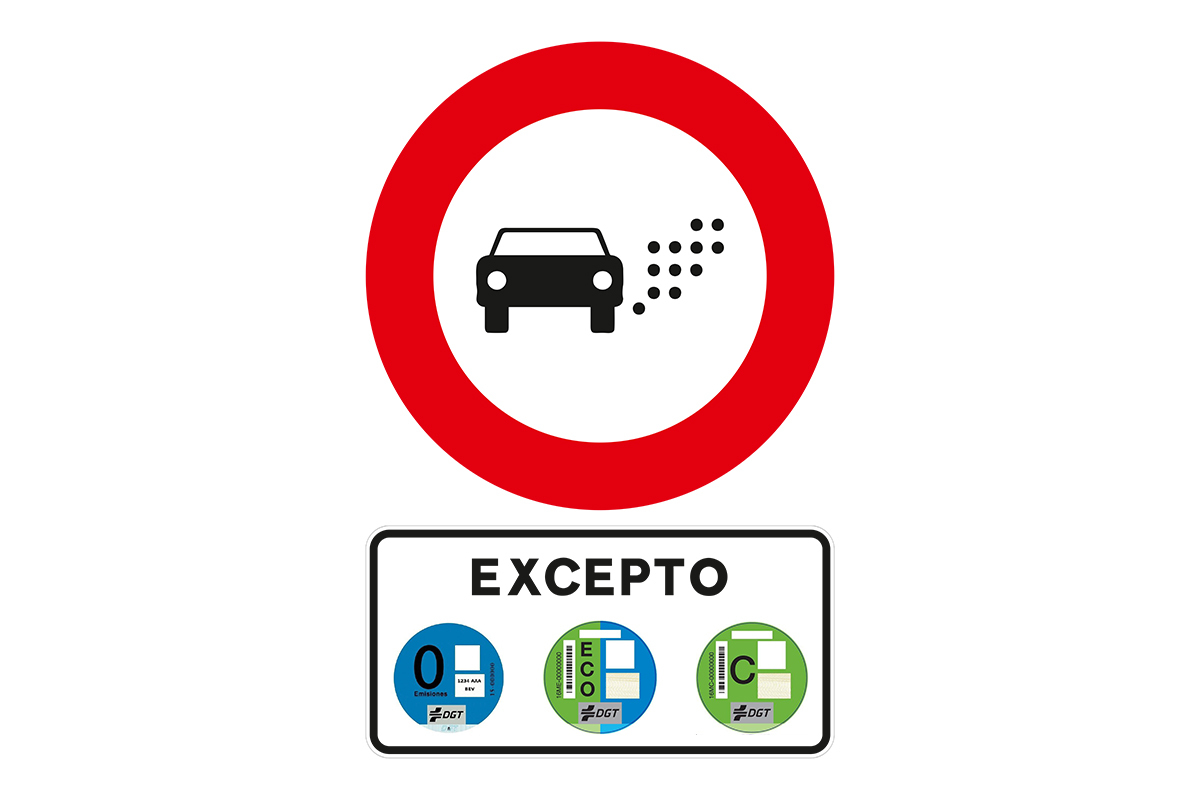
Air pollution caused by greenhouse gas emissions resulting from the combustion of vehicles is increasing more and more. All this leads to global warming that is causing an increase in average temperatures worldwide. To try to alleviate these problems, vehicles are being classified according to the degree of contamination. For this, the DGT environmental labels. These tags are beginning to create numerous questions.
For this reason, we are going to dedicate this article to telling you what the DGT environmental labels are, their characteristics and what you should do.
What are the environmental labels of the DGT

As 2022 approaches, our nation will see major innovations in transportation. While some Spanish cities such as Madrid or Barcelona already have their own low emission zones, all cities in more than 50.000 inhabitants will have until 2023 to have an anti-pollution plan that goes hand in hand with the new laws on climate change, where DGT stickers or Labels will be essential.
The DGT's environmental badge is key when it comes to establishing the limits that each one faces. In Madrid, cars without stickers were evicted from the historic center of the capital, while in Barcelona their circulation was severely restricted. But even those cars labeled B and C have some restrictions to consider.
Classification of DGT environmental labels

To establish the environmental classification, the DGT appeals to the European anti-pollution regulations for the technology that drives the vehicles that manufacturers have had to face in recent years. In summary, the DGTs are classified as follows:
- no label: all pre-2001 or non-Euro III compliant gasoline. All diesel before 2006 or non-compliant with Euro IV.
- Label B: All gasoline registered or Euro III compliant as of January 1, 2001. All diesel fuels registered or Euro IV and Euro V compliant as of January 1, 2006.
- Label C: all gasoline registered or Euro IV, Euro V or Euro VI compliant as of January 1, 2006. All diesel registered or Euro VI compliant as of September 1, 2015.
- ECO label: All hybrid or plug-in hybrid vehicles with an electric range of less than 40 kilometers. All vehicles powered by natural gas, compressed natural gas (CNG) or liquefied petroleum gas (LPG) and meeting the requirements of label C.
- Zero emissions label: All pure electric, plug-in hybrid or extended range, pure electric, or electric vehicles with a range of more than 40 kilometers. All vehicles powered by hydrogen or fuel cells.
Advantages and limitations

2022 will be key to creating the mobility of the future in 148 Spanish municipalities with more than 50.000 inhabitants. The government has given municipalities the freedom to establish low emission zones as they see fit, but always with the aim of reducing emissions. Until now, the measures have consisted of blocking the flow of the most polluting vehicles.
Currently, in Madrid, vehicles without license plates cannot circulate on the M-30 unless they are residents. In future plans, it is proposed to gradually expel all cars without an environmental label from the city, since they cannot circulate in the city even if the owner is a resident of the city, by 2025. In addition, vehicles marked with C or B must To enter the downtown district (former Madrid Downtown District) you have to park in the parking lot. ECO and zero emission vehicles can move freely in the space, but only those classified as zero emission vehicles can park on the street for more than two hours.
In addition, both ECO and zero emissions are economically advantageous when parking in regulated parking spaces. Violation of these rules will result in a fine of 90 euros for each violation of entry into the designated area.
In Barcelona, the low emission zone coincides with the Barcelona metropolitan area. That is, its extension is 95 square kilometers, while the extension of the central area of Madrid is only 4,72 kilometers. Their restrictions are different, although they wanted to restrict all vehicles with B stickers, they ended up banning cars without signs on weekdays and between 7am and 00pm.
In this 2022 the cities of Badalona and Santa Coloma de Gramanet will be added to the space. In Barcelona, for example, the fine is 100 euros, but the city council can fine the driver again if he has not left the prescribed area after 90 minutes. In other Spanish municipalities with more than 50.000 inhabitants there are still no clear permanent restrictions on vehicles without stickers, which will only be imposed if temporary anti-pollution protocols are applied, but the new low emission control zones bring difficulties.
How and where can it be obtained?
On the DGT page you will find the form where you can find the type corresponding to your car (not for all cars) and indicate the license plate (only if it is inside a vehicle authorized to circulate).
Once approved, you can purchase the stickers at:
- Post Office
- The seminar network of the Spanish Confederation of Seminars (CETRAA) and other authorized seminar networks.
- Executive manager.
- Automotive Research Institute (IDEAUTO)
- For fleets, you can get badges through the Ganvam Association.
Post offices cost from €5 per label (VAT included) or you can buy it in their web store for €2,99 shipping. The only exceptions are those cars that meet the special requirements contained in the National Air Quality and Atmospheric Conservation Plan 2013-2016. Remember that at the time of purchase you must present ID and driver's license.
I hope that with this information you can learn more about the DGT environmental labels and their characteristics.